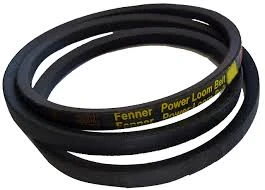- Arabic
- French
- Russian
- Spanish
- Portuguese
- Turkish
- Armenian
- English
- Albanian
- Amharic
- Azerbaijani
- Basque
- Belarusian
- Bengali
- Bosnian
- Bulgarian
- Catalan
- Cebuano
- Corsican
- Croatian
- Czech
- Danish
- Dutch
- Afrikaans
- Esperanto
- Estonian
- Finnish
- Frisian
- Galician
- Georgian
- German
- Greek
- Gujarati
- Haitian Creole
- hausa
- hawaiian
- Hebrew
- Hindi
- Miao
- Hungarian
- Icelandic
- igbo
- Indonesian
- irish
- Italian
- Japanese
- Javanese
- Kannada
- kazakh
- Khmer
- Rwandese
- Korean
- Kurdish
- Kyrgyz
- Lao
- Latin
- Latvian
- Lithuanian
- Luxembourgish
- Macedonian
- Malgashi
- Malay
- Malayalam
- Maltese
- Maori
- Marathi
- Mongolian
- Myanmar
- Nepali
- Norwegian
- Norwegian
- Occitan
- Pashto
- Persian
- Polish
- Punjabi
- Romanian
- Samoan
- Scottish Gaelic
- Serbian
- Sesotho
- Shona
- Sindhi
- Sinhala
- Slovak
- Slovenian
- Somali
- Sundanese
- Swahili
- Swedish
- Tagalog
- Tajik
- Tamil
- Tatar
- Telugu
- Thai
- Turkmen
- Ukrainian
- Urdu
- Uighur
- Uzbek
- Vietnamese
- Welsh
- Bantu
- Yiddish
- Yoruba
- Zulu
Nov . 27, 2024 14:15 Back to list
Industrial Flat Belt Solutions for Enhanced Performance and Durability in Manufacturing Processes
Industrial Flat Belts A Cornerstone of Modern Manufacturing
In the realm of industrial machinery, flat belts play a pivotal role in facilitating movement and transferring power. These belts, typically composed of a flexible material, such as rubber, fabric, or leather, have been utilized for decades in various manufacturing processes. Their simplicity, efficiency, and versatility make them a cornerstone of modern manufacturing.
Definition and Composition
Industrial flat belts are continuous loops that operate on pulleys or driven machinery, allowing them to transmit torque and power from one component to another. Unlike other types of belts, flat belts have a broad, flat surface, which increases the area of contact with the pulley, leading to enhanced friction and power transmission efficiency. The composition of these belts is crucial; they are often fabricated from durable materials that withstand wear and tear, such as rubber or high-strength synthetic fabrics, which offer remarkable tensile strength and flexibility.
Mechanism and Operation
The operation of flat belts is relatively straightforward. When a motor or engine turn drives the pulley, the belt rotates around it. This rotation is transferred to the next pulley or driven component, creating motion. The efficient transmission of power via flat belts occurs thanks to the principles of friction—when properly tensioned, the belt grips the pulley securely, minimizing slippage and maximizing efficiency. This design allows flat belts to convey power across significant distances and at high speeds, making them ideal for a variety of industrial applications.
Applications in Industry
Flat belts find applications across a wide array of industries, including manufacturing, textiles, food processing, and packaging. In manufacturing plants, they are commonly employed in conveyor systems that transport products from one station to another. In textile mills, flat belts drive spinning and weaving machines, ensuring smooth and consistent operations. Additionally, food processing facilities rely on these belts to move ingredients through various stages of production, from mixing to packaging.
One significant advantage of flat belts is their ability to operate in environments that might otherwise be detrimental to other types of conveyance systems. For example, flat belts can handle moderate temperatures and resist certain chemicals, making them suitable for applications in food and beverage processing.
Advantages of Flat Belts
industrial flat belt

The popularity of flat belts can be attributed to several advantages they offer
1. High Efficiency Due to their large surface area, flat belts can transmit power effectively without excessive energy loss. This efficiency translates to reduced operational costs for businesses.
2. Simplicity and Cost-Effectiveness Their simple design allows for easy installation and maintenance, which can lower the overall cost of machinery. Replacement of flat belts is generally straightforward and can be performed without specialized tools.
3. Versatile Design Flat belts can be used in various configurations, allowing for different angles and distances between pulleys. This versatility means they can accommodate unique machinery layouts and challenges.
4. Reduced Noise Levels Compared to chain drives or gear systems, flat belts tend to operate more quietly, which can contribute to a more pleasant working environment.
Challenges and Improvements
Despite their advantages, flat belts are not without challenges. They can be vulnerable to wear and may require regular maintenance to ensure longevity. Tension regulation is also crucial; too much or too little tension can lead to slippage or excessive wear. Manufacturers continually seek innovations to improve the durability and performance of flat belts. Advanced materials and construction techniques, such as reinforced fibers and coatings, are being explored to enhance their effectiveness in demanding environments.
Conclusion
In conclusion, the industrial flat belt is a fundamental component in the machinery of modern manufacturing. Its efficiency, versatility, and cost-effectiveness make it a preferred choice in various industries. As technology advances and new materials are developed, the future of flat belts is likely to be characterized by even greater durability and adaptability, further solidifying their role in the ever-evolving landscape of industrial operations. By understanding and leveraging the benefits of flat belts, industries can continue to enhance productivity and efficiency in an increasingly competitive market.
-
Upgrade Power Steering Pump Belt for Smooth, Quiet Operation
NewsAug.27,2025
-
Precision Timing Belt & Chain: Engine Performance & Durability
NewsAug.26,2025
-
Precision Lathe Drive Belts: Durable & Reliable Performance
NewsAug.25,2025
-
84.5 Serpentine Belt: Durable & Precision Fit for Your Engine
NewsAug.24,2025
-
Premium Ribbed Drive Belts for Quiet Power Transmission
NewsAug.23,2025
-
High-Performance Vehicle Timing Belt for Engine Precision
NewsAug.22,2025

